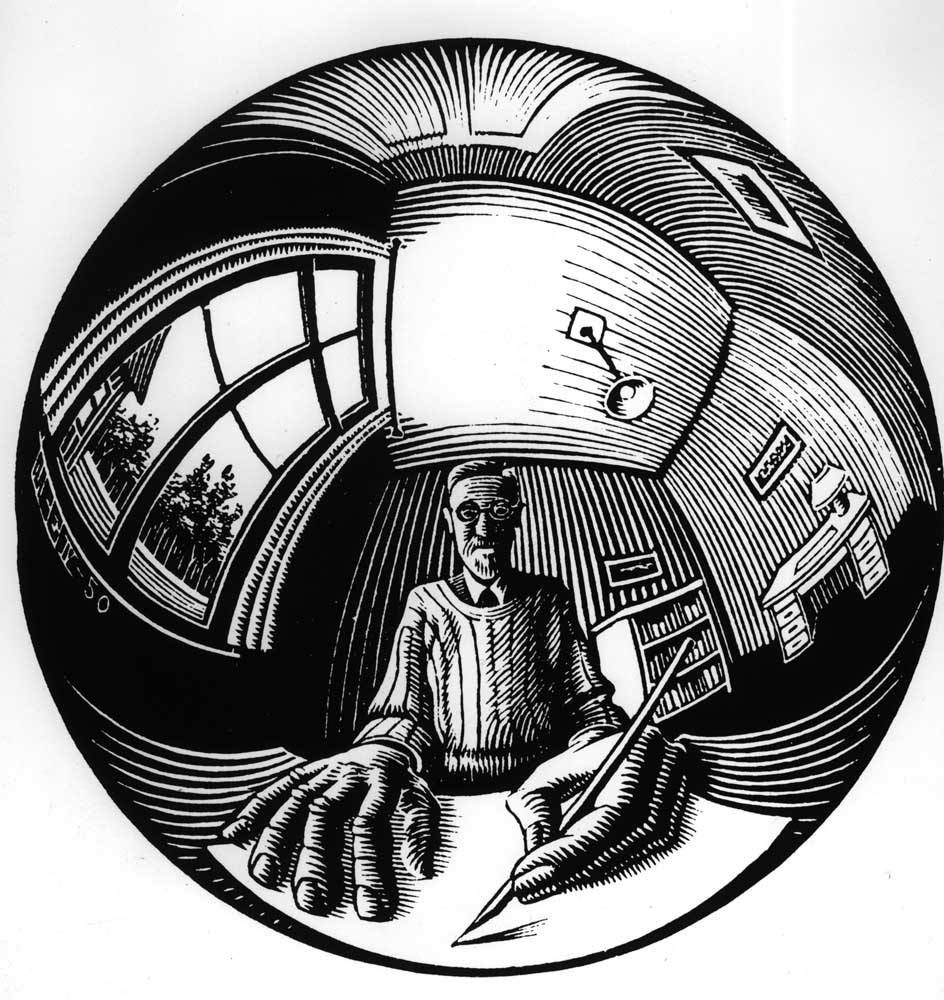Bend’s Atelier 6000 hosts Escher works
Published 12:00 am Friday, April 4, 2014

- Bend’s Atelier 6000 hosts Escher works
Bend artist Ron Schultz put together a list of useful terminology for talking about renowned 20th century graphic artist M.C. Escher.
Last week, he rattled off the list for this reporter: “paradoxical, visual illusion, contradiction, dynamic equilibrium, the limits of perception, impossible compositions, impossible objects, defiance of the laws of the physical world, relativity, duality, unsettling.”
Even if you didn’t know he was talking about Escher, you could almost guess which artist the list referred to.
Of course, Schultz is talking about Escher. A show of 21 original prints by the prolific Dutch artist and printmaker opens tonight at Atelier 6000 in Bend (see “If you go”). It presents a rare opportunity to see firsthand the inventiveness of a truly original artist whose influences included Lewis Carroll.
Like the writer of “Alice in Wonderland,” Escher could bend and skew reality, although he did it visually, drawing a house full of impossible staircases leading up, down or sideways. He could make a lizard crawl from, and disappear back into, a drawing, yet also capture still life in exquisite mechanical detail.
“Each print is a puzzle that asks to be solved, but the solution is elusive,” Schultz said. Along with other area artists, he researched and wrote several essays that will appear in the catalog accompanying the show, which comes to Atelier 6000 courtesy of a private collector who wishes to remain anonymous, said A6’s interim executive director, Julie Winter.
“It’s a private collector in the Northwest, and they want to share it with the community. They picked us to do that through, and we’re just really grateful,” Winter said. She credits ScaleHouse, a network of creative collaborators in Central Oregon, as playing a key role in landing the exhibit at A6, which opened its doors in the Old Mill District in 2007 and became a nonprofit in 2011.
“Original prints” means Escher “carved the wood, carved the plate, hand-inked it, printed it himself,” Winter explained.
Maurits C. Escher was born in 1898 and created more than 400 original prints before his 1972 death. The exhibit showcases Escher’s skill in wood cut, wood engraving, lithography and linocut.
“They’re complex,” Schultz said of Escher’s works. “One of Escher’s main motivations was showing people the limits of human eye-brain comprehension. What he was doing was creating these complex worlds on a two-dimensional surface that could not exist … in the three-dimensional reality.”
Accompanying the show will be information about Escher’s fascination with polyhedra models, 2-D patterns that can be folded into five-sided objects. A number of schools have already made plans to visit the exhibit, and students will be able to return to classrooms to put together polyhedra models Schultz is drawing for the exhibit.
The show is a “great vehicle for young people, or any age, really, to get into some of these mathematical and geometrical concepts,” Schultz said.
He came to appreciate Escher at a young age himself.
“There was a certain time period — I was living in Berkeley at the time,” he said. “I worked at a bookstore there, and one of my jobs was buying back textbooks from students. There was an abundance of math, science and psychology textbooks that used Escher’s illustrations as a pictorial image of the concepts they were trying to communicate. Early on, I sort of saw that it was a teaching tool, even though Escher wasn’t himself a mathematician or a scientist … but he kind of educated himself, through graphic techniques, to understand geometry, mathematical concepts and the laws of perspective.”
Schultz served as a curator of the exhibit along with fellow Central Oregon artist and A6 volunteer Barbara Hudin. According to Hudin, Escher was mainly interested in the concepts of geometry, perspective and shadows. “He was a master of those three things, over time,” she said.
“Artists … are interested in the logic of space,” Hudin said. “You have expectations of the position of objects. When you look at objects, your expectation is that the table is going to be on the floor. In the distance, objects look smaller. And shadows, if you look up at the ceiling, you see the ceiling’s darker. Escher took those elements and completely turned them around for us, giving us a whole different world.”
Said Schultz: “You’re going along and everything makes sense to a certain point, and then everything suddenly flips. Inside becomes outside, and up becomes down. Water’s running downhill and suddenly it’s at the top again. It’s that kind of distortion of reality that demonstrates, to me, anyway, that we’re always trying to — no matter what kind of artwork we’re looking at — we’re trying to make some sort of three-dimensional image that we can relate to.
“Really, it’s just an illusion,” he continued. “It’s on a flat surface, and it’s not three-dimensional. It’s sort of living in these two different planes.”
— Reporter: 541-383-0349, djasper@bendbulletin.com






